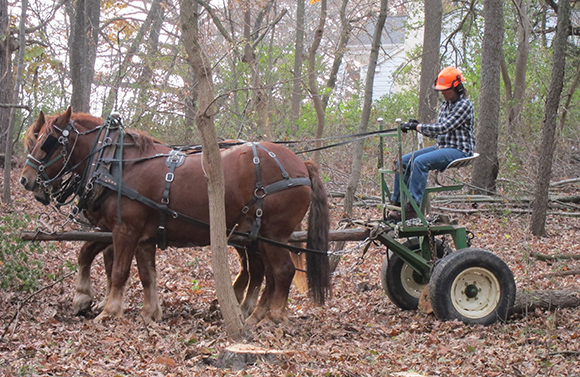 This November Holy Wisdom Monastery will begin restoring 30 acres of its land to oak savanna, considered by the Wisconsin Department of Natural Resources to be Wisconsin’s rarest plant community. Oak savanna is characterized by widely spaced oak trees (between 10-50% tree canopy) with primarily grasses covering the ground. Before European settlement it was one of the most common plant communities in Wisconsin but now only a fraction remains.
This November Holy Wisdom Monastery will begin restoring 30 acres of its land to oak savanna, considered by the Wisconsin Department of Natural Resources to be Wisconsin’s rarest plant community. Oak savanna is characterized by widely spaced oak trees (between 10-50% tree canopy) with primarily grasses covering the ground. Before European settlement it was one of the most common plant communities in Wisconsin but now only a fraction remains.
“Before Europeans arrived, oak savanna was more common than forest or prairie in southern Wisconsin,” explained Holy Wisdom Monastery’s Director of Land Management and Environmental Education, Greg Armstrong. After European settlement in the 1840s, savannas were plowed up for crops and grazed on by cattle. In addition, the fires that maintained savannas were stopped and trees were able to fill in the canopy gaps that previously had allowed sun to shine down so savanna grasses could grow. Armstrong went on to explain, “Forest now grows in parts of Wisconsin and in types of forest that had not existed before. Savanna is now one of the rarest ecological communities in North America.”
Holy Wisdom Monastery developed a comprehensive land management plan that calls for the restoration of the fire communities of southern Wisconsin including prairie, oak savanna, and closed canopy oak-hickory forest. About the undertaking Armstrong said “It is very exciting to be restoring savanna at Holy Wisdom Monastery. The first thing to do is plant oak trees. Oak trees are fire tolerant and can easily survive the prescribed burns that will mimic the fire conditions of pre-settlement Wisconsin. When the trees are more mature, in another 20 years or so, we will then add in some signature savanna understory plants, some of which are now rare and little-known.”
Another step in the process is the removal of non-savanna trees, like maples and black walnuts that tend to fill in the canopy in the absence of fire. Holy Wisdom Monastery will begin the removal of those trees this fall and will be using a low-impact horse-drawn logging operation conducted by Adaptive Restoration, LLC. Holy Wisdom’s Director of Operations, Toby Grabs, said of the decision to use horses to remove the logs “it fits in well with our mission of caring for the earth. Horses are much easier on the landscape compared to heavy equipment and also don’t create the pollution.”
“The restoration of a savanna is a long term project and will require a long term commitment and lots of work,” Armstrong commented. “Holy Wisdom Monastery seems to me to be a good place to restore savanna since the place has been caring for the earth since 1953.” In fact, earlier this year, the Benedictine Sisters at Holy Wisdom Monastery received the international Assisi Award for conservation efforts spanning more than 60 years from the Society of Conservation Biology in Cartagena, Colombia.
Holy Wisdom Monastery is a retreat and meeting center and Benedictine monastery in Middleton, WI and is open to all. The monastery, established in 1953, is located on 130 acres of restored prairie and woodland overlooking Lake Mendota. The new monastery building was awarded the highest rating in the US for Leadership in Energy and Environmental Design (LEED) in 2010. Holy Wisdom Monastery also offers environmental education and spirituality programs throughout the year, prairie restoration volunteer opportunities, and Christian church services every Sunday. More information on Holy Wisdom Monastery and their land management efforts is available on their website at holywisdommonastery.org or by calling 608-836-1631.


